Text
Hey Emily,
Great post, you have a very interesting perspective. I really enjoyed reading about you're crossroads between science and journalism. In high school, the one class we must take every year is English. This is because no matter what you do, or what career path you choose, proficiency in English will find its place. Once you take your course in creative writing, having that background will likely be relevant no matter what you do, including if it's in zoology.
I know you ended up choosing the science route, but I always wonder about the 'cross-over' factor when people have a major in one topic and a minor in something completely different. What jobs are out there that combine their two topics of expertise? But for you, I think interpretation is the best crossover of all (other than perhaps writing about animals in the news or something). You get to use your knowledge about nature and convey it to listening ears, what's better than that?
I'll leave you with two questions, I'm curious about what your final push was to choose science over journalism? Do you think it was the right choice after taking this course that merges the two?
Best,
Megan
Unit 10: Nature Interpretation's Role in Environmental Sustainability

If I were to be totally honest with myself, the only reason I took this course to begin with was to fulfil a credit required to earn a certificate of environmental conservation when I graduated. There were very few options as to what credits I could take, and this one was available so I jumped at the chance. But I could not have been more lucky in taking that chance. That is because from the start of my university career I have consistently asked myself ‘what if I went the other way?’ I ask myself this because when I graduated highschool I was at a pretty big crossroads. I had spent my years in highschool volunteering as a student journalist in addition to taking the required science credits to go on one of two career paths: that of the scientist or that of the journalist. I of course took the route of the scientist, but again, what if I had gone the other way? This thought persisted, and as a result I have always valued the chance at learning how to integrate what I learned in science with that of communication, unfortunately I haven’t had as many chances to build these skills as I would have liked. Enter: this course.
In taking this course I unknowingly received the perfect opportunity to do what I’d always wanted, interpret what I’d learned in my zoology major and gain the skills to present it to a larger audience. Over the course of this semester I have learned way more about nature interpretation than I could have predicted, and I am definitely leaving this class a better communicator than when I began. So then, what have I learned?
I think one of the most important things I learned within this course was the importance of ethics while communicating. I’ve always tried my best to consider my audience when creating a project, but at the end of the day I am just one person with one point of view. Something that stood out to me while taking this course was the emphasis placed on privilege and the part it plays in experiencing nature and the lack of opportunities faced by those who lack it. In my own personal ethic I have always strived to be empathetic, honest, and responsible for my actions. But, what this course has allowed me to do is see the ‘invisible backpack’ described by Gallavan (2005) that many people carry with them. In considering my own code of ethics I need to be responsible in not making assumptions about certain groups, and know that not everyone has had the same opportunities as I have. Like many people I have felt the guilt of having these opportunities when others don’t, but rather than continue to think that simply feeling bad about my place in our society is enough, I know I have to strive to do better and make personal goals for myself. In other words, in order to be a good communicator I can’t just provide for one audience, but all audiences. It is so easy to tell people that if they want to experience nature then they should just go outside and touch the grass as they say, but this is not as easy as people think. There are hundreds of invisible barriers people with privilege who perceive their norm as the cultural norm simply cannot see. Economic barriers, cultural barriers, communication barriers, and so much more. It is learning about these barriers, and working with the people who face them that we can find ways to overcome them and provide less privileged people with interpretation catered to their needs rather than the same run of the mill experience that may be equivalent to others experiences, but not nearly as impactful.
I mentioned before how I once wanted to become a journalist rather than a scientist, and how I am still striving to be a better communicator. Communication is a broad term that has many different definitions. If I wanted to communicate with someone, I could do so using visuals, or music, or writing, or even through dance. Over history, different cultures have found different ways to interpret nature and communicate lessons learned from it to the next generation. For me, my skill set lends itself to utilising writing as the best approach to nature interpretation. Not only am I more confident in the written word, I am creative as well, or at least I try to be. Both the textbook and Strauss (1996) describe the importance of anecdotes and imagery to engage the audience. I know that throughout my life the lessons I have remembered the most were the memorable ones that had a great story behind them. It's part of the reason I can recount twenty hours of lore for major sci fi franchises and yet can barely remember my first year chemistry class. What sticks with people are experiences, and if you can engage people with nature through an immersive and creative experience, they will take that lesson and repurpose it for themselves.
Next year I plan to take a year off science and pursue a graduate certificate course in creative writing. I am in no way giving up science, but what I am doing is trying something new, and something I have always wanted to do. I have learned that influencing people to learn science through media such as fiction and other forms of creative writing can be just as impactful if not more so than discovering the facts in the first place. I hope to one day use what I have learned in this class and the rest of my undergrad to not only continue to be a responsible scientist, but a scientist who can communicate creatively with the next generation and inspire them to consider not just their own needs, but everyone's needs when it comes to nature.
Beck, L., Cable, T. T., & Knudson, D. M. (2018b). Chapter 5: Guiding Principles of Interpretation. Interpreting cultural and natural heritage : for a better world. (pp.81-101) Sagamore Venture.
Beck, L., Cable, T. T., & Knudson, D. M. (2018c). Chapter 7: Serving Diverse Audience. Interpreting cultural and natural heritage : for a better world. (pp.105-123) Sagamore Venture.
Gallavan, N. P. (2005). Helping teachers unpack their “invisible knapsacks.” Multicultural Education (San Francisco, Calif.), 13(1), 36–36.
Strauss, S. (1996). The passionate fact : storytelling in natural history and cultural interpretation. North American Press.
33 notes
·
View notes
Text
Hey Teagan,
This was a fantastic post, I really like your use of pictures throughout - they're beautiful! When reading through, I realized we have something in common. Last summer, I also switched my major from animal biology to wildlife biology and conservation. I knew for a long time that I was unhappy in my major; I didn't want to do all of the extra schooling to become a vet, the major is very competitive, and frankly, I don't really care much for farm animals (they can be quite cute though). I spent this summer doing wildlife rehabilitation, and though I had been interested in that field for a long time, I finally realized it was my calling. Once I changed majors my grades were higher than they've ever been and for once I'm actually interested in what I'm learning about. I suppose we both kind of had that "aha" moment.
I agree with the 4 main qualities you find to be most important as an interpreter, but your description of 'honest' caught my eye. You find that interpretation is about describing the facts to an audience that came to learn. I think it is important to consider that not every individual may be there for the same reason. Some people go on an interpretive tour to spend time with family doing a fun activity or just see the scenery - not everyone is deeply invested in the facts the guide is saying. You should also consider the age of your audience and how not all facts are suitable for children. I do agree that the audience shouldn't be lied to and that honesty is important, but also be mindful of how you state these facts so that it can still be enjoyable for your audience.
Amazing job,
Megan
My Role in Interpretation: Nature and the Environment
For me, as a developing nature interpreter and a growing human, there are a lot of values and ideals that are important to stay true to when I’m out there in the world, observing and interpreting. I’ve discussed and reflected throughout this course about who I am as an interpreter, so it’s only fitting to share that as I sign off for my final blog.
I remember mentioning in my first blog post how I felt this field of conservation and interpretation is where I was meant to end up. I wanted to talk more to that and why I chose to pursue this type of work.

First off, I was an anxious kid when I was younger, not that that changed very much. I remember learning about climate change in science class, and it blew my mind when I found out this isn’t how it’s always been. There was a time when people didn’t worry about their emissions, or fret over a hole in the ozone layer, or talk about tipping points and irreversible damage and the ocean levels swallowing us whole.
Not every generation was told they were the last hope.
I had originally wanted to become a vet. I always say I changed majors from Animal Biology to Wildlife Biology and Conservation because I didn’t want to be doing the same spays and neuters for the rest of my life. The truth is, when I first heard about WBC, I was drawn in and it felt like I had this “aha moment” where I realized my purpose and where I would excel. Since then, I’ve learned just how to fulfill this purpose. I’ve heard over and over that it’s hard to make a career out of animal/environmental care and conservation. But that’s not why people rally to make these big movements for conservation, raise awareness, and advocate through their interpretation. So what drives us, what drives me?
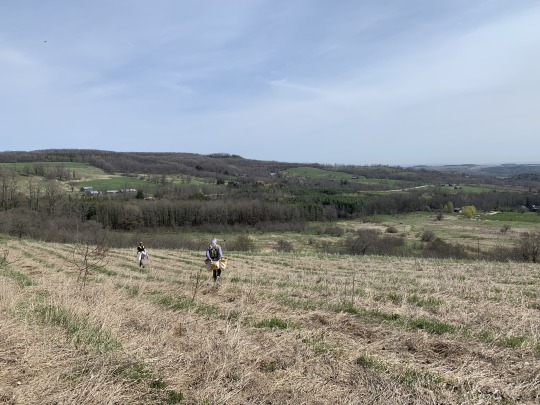
I’m not in it for the money. I know I’m selfless and honest and respectful and empathetic. But these aren’t the values I want to describe just me, I want these ideals to be associated and intertwined with my interpretation, to guide and direct it.
Selfless
Selflessness means putting others before yourself. When I say I think it’s important to be selfless as an interpreter, what I mean is that you constantly have to be thinking about the audience you are providing your interpretation to. Interpreters aren’t doing this service just to hear themselves talk or just to cash a cheque. I became an interpreter because I cared about getting important messages out to people that want to listen. You can’t disregard your audience because they are the reason we interpret, and they are how our interpretation will spread.
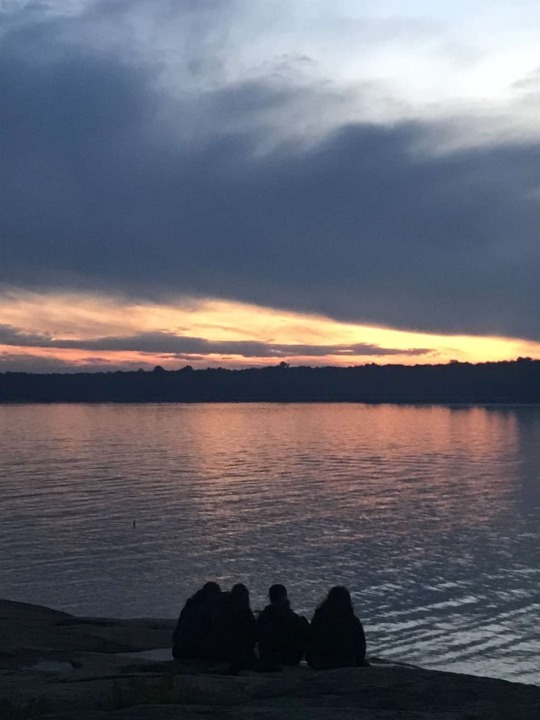

Honest
As an interpreter, I never lie to an audience, and I will always stick by this. I won’t make an issue bigger than it is, but I also won’t sugarcoat it to lessen the sting of reality. People are seeking interpretation and its services because they want to learn. I want my interpretation to be meaningful and relevant. We discussed in Unit 6 the importance of integrity, mostly in regard to historical interpretation, but this ideal is applicable to interpretation as a whole. It’s my job to make my message entertaining by itself, not add useless, half-true, or distracting filler for the sake of entertainment. An interpreter’s role is to lay out the facts, and move people to make them care about the message.
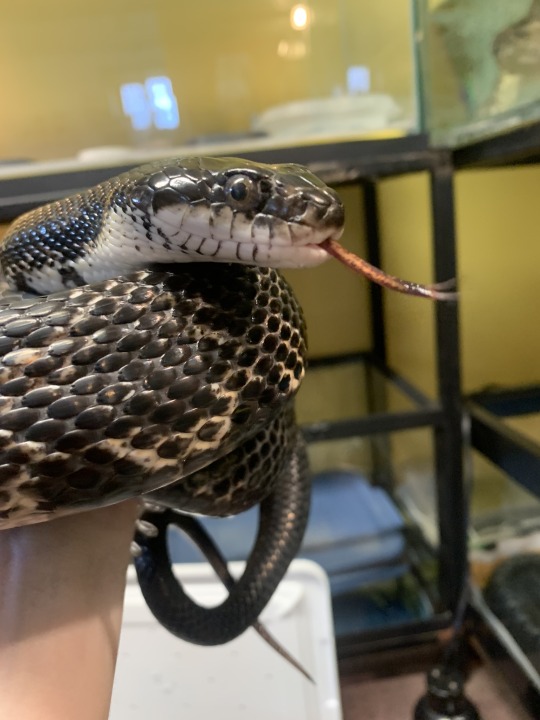

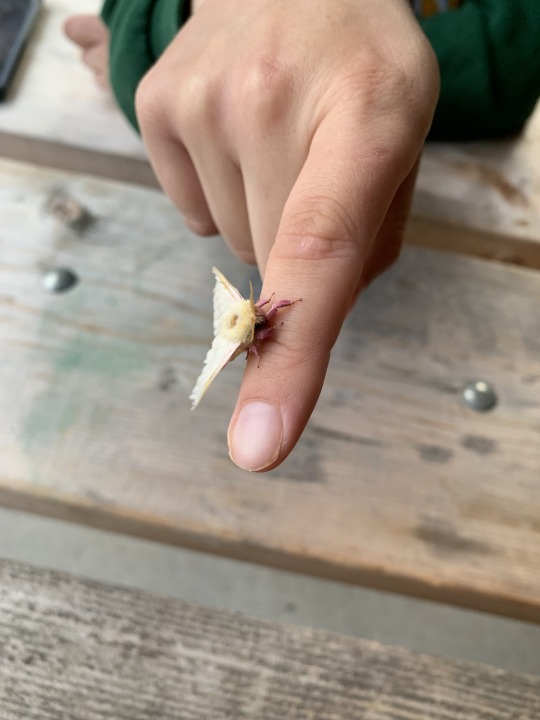
Respectful
I feel this one is pretty self-explanatory, but the idea behind this is that people copy what they see. Of course, we want to practice respect all the time, but sometimes people forget that applies beyond human-human interactions. I think it’s not only important to be respectful of the people I talk with, but also of the animals I may handle to demonstrate messages, or the plants I pass on a nature hike, or just the way I talk about my appreciation for the environment around me. I think it’s especially important to verbalize to an audience the respect I am showing when demonstrating appreciation for something because it encourages mutual respect between them and me, and also them and their environment.
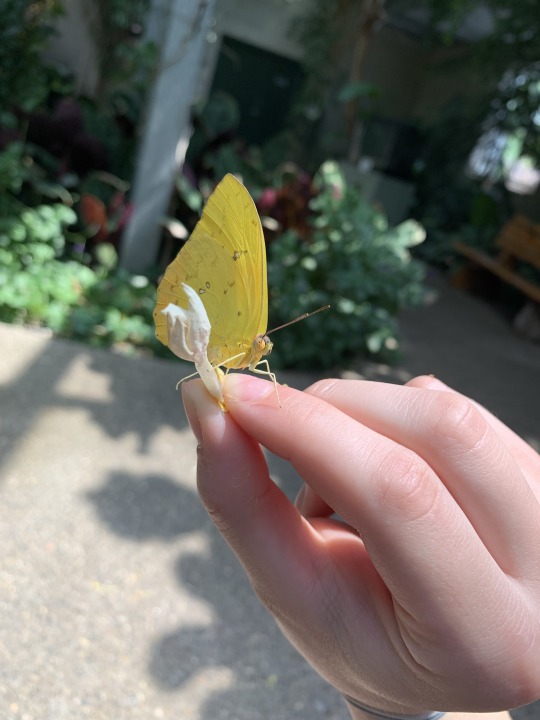
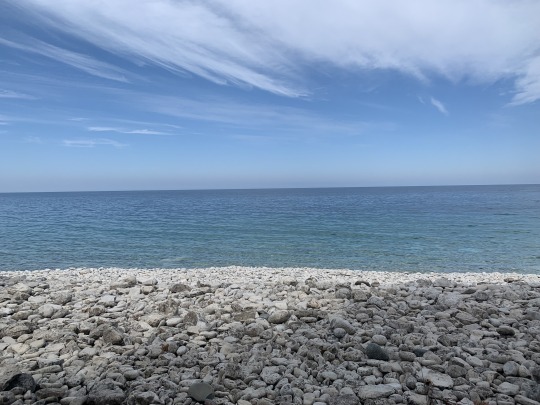
Empathetic
I want to be mindful of other people and how my interpretation may be further perceived based on different privileges. I think this was an important topic we reflected on in the course earlier, and moving forward something I will be (and already have been) conscious of when designing my approaches for interpretation. I think being empathetic can make me a better and more effective interpreter this way since I am constantly thinking about how to be more inclusive by changing my message, delivery, target audience, etc.
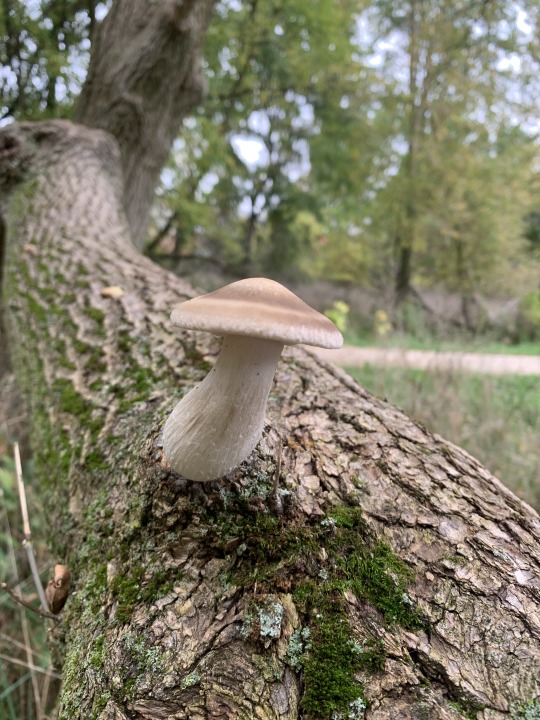

I aim to inspire people with my passion and enthusiasm for wildlife and environmental conservation. Sometimes I want to inspire action and change, other times I just want to make someone care. Not all of us interpreters will be reaching the same audience, so it’s important to work together so that we can rally everyone together for a common goal, a positive experience that can one day lead to positive change.


Art, science, technology, and teaching are the approaches I tend to gravitate toward as an interpreter, and I think are best suited to me as an individual. I like to use these four in combination because they can have different effects on how your message is presented and interpreted. Teaching is personable and unique, but so is art. Art doesn’t require much talking sometimes and can lead to deep reflection. Science is cool and fascinating, and also empowering for audiences. Technology is becoming more accessible and can elevate interpretation.
I didn’t leave myself very many words to summarize my post, but I hope some people out there relate to some things I’ve said and have more to add themselves. I definitely could go on, so if we meet on the other side of this screen, let’s chat about nature interpretation! You can tell me what you learned and I will share what I have too. Cheers to a good semester, best of luck.
Teagan :)
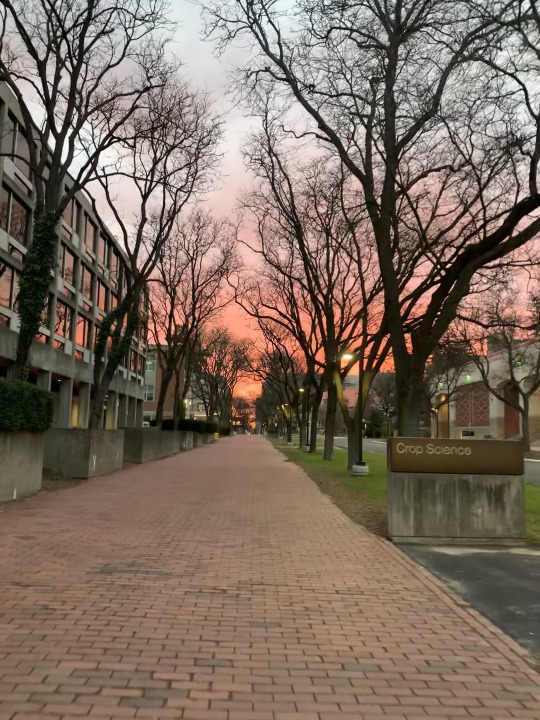
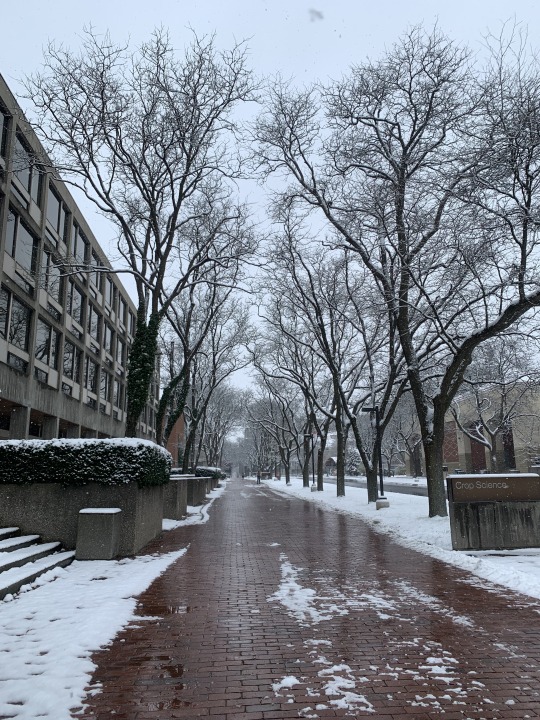
20 notes
·
View notes
Text
My Recipe for Exceptional Interpretation
My previous experience in the field paired with this course has taught me a lot about perspective. As an interpreter, as any form of educator really, it is my job not only to teach but to teach effectively. By doing so, I must understand my audience, the subject matter, and be able to adapt quickly to ever-changing situations. To have an amazing tour, each ingredient must be of good quality. Today I’d like to share with you my personal recipe for being an outstanding nature interpreter.
Beginning the tour is usually the most difficult part. Being put into a leadership position with people that you just met can be scary. From the audience’s perspective, they’re dedicating a chunk of time to someone they don’t know, possibly surrounded by strangers. To break the ice, asking questions to the audience can make them more comfortable. I start with the easiest questions, ones that have no wrong answer such as “where are you from?” and I tell them about myself, so everyone gets to know each other. Later I ask questions relating to the topic that are a bit more obvious or have many possible answers. The goal here is for them to become excited when they get the answers correct. Never say ‘no’, as it’ll discourage them from answering again later in the tour, but find ways of navigating the right answer. Once the audience has become more comfortable answering questions, you can ask them more difficult ones, even challenging them. This technique creates a comfortable and interactive audience, and is especially effective with children! They are now hopefully actively listening rather than passively, and this drives them to be more enthusiastic about learning the content.
The interesting part about being an interpreter is that no two jobs are quite the same. Sure the positions may have equal pay and the same job description, but it is the person filling the position, you, who really makes the job. It is important to not just relay information from some script to your audience, but really show them who you are as a person. Doing this can create relationships with your audience, perhaps even finding links you have with them. The audience won't only remember what you’re teaching, but they’ll remember you. Being personable and relatable makes the audience more comfortable. Because of this, individuals may be more inclined to ask questions which creates a better tour. Personally, I believe I’m quick-witted and funny, so I like to incorporate that into my tours. The experience is better for everyone when it doesn’t feel like a lecture.
It is my responsibility that my audience has an enjoyable tour. For this, I must be able to read them and reflect their needs in my tour. This is why adaptability is an important quality, as I need to understand what is working… and what's not. I have to understand the goals of my audience, not just my own. Some people are just there to see pretty scenery, some may be there to spend time with their family, some to learn everything they can about the topic, etc. If I’m ever unsure, I can always ask; “what brings you here today?” or “what are you most excited about?” to get to know my audience better. Once I have grasped what people are looking for, I may change my approach for that tour into something that better suits their needs. For example, talking less and using props more, or providing a more science-based tour. No two tours are going to be the same, because it is the audience that makes the tour, not just the guide.
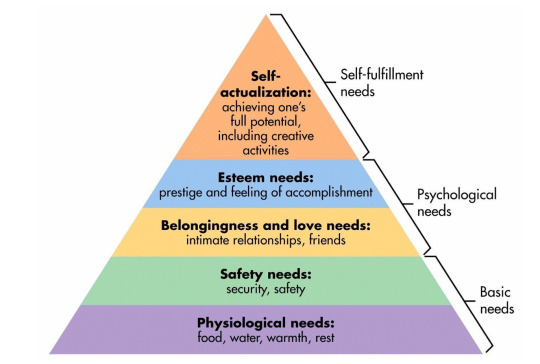
Maslow’s Hierarchy of Needs (McLeod, 2018).
Something I think about a lot on my tours is Maslow’s Hierarchy of Needs. There are 5 needs on this pyramid that everyone has, and one level cannot be satisfied until the one below it is (McLeod, 2018). Beginning with physiological needs, no one can enjoy a tour if they need to use the washroom or are freezing cold. Interpretive tours aren’t a necessity in life, guests usually come for a fun and perhaps educational experience, putting it near the top of the pyramid. Obviously, as an interpreter, I cannot help the guests with all of these needs, but I can start by pointing out the washrooms, advising them of the appropriate attire, letting them know any rules to keep them safe, and as mentioned earlier, bonding with them to have a more friendly relationship.
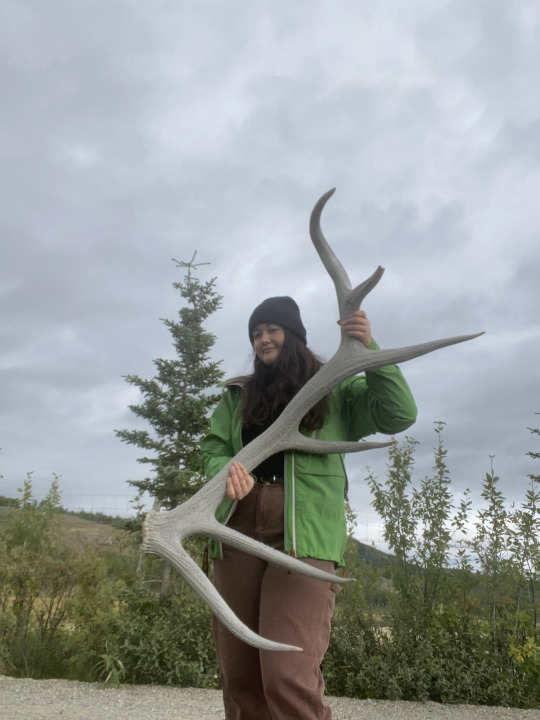
An antler at my interpretation job, available for guests to hold.
It is important to consider each individual in your audience, and the type of learner each one may be. As an interpreter, you’re likely doing a lot of talking, but not everyone learns just by listening. In interpretation, tools such as props can be used to enhance your audience's experience. From a feather to fur, to an interesting picture or piece of art, props can do more than your mouth. Props like art can also represent a different perspective that perhaps I am unable to as an interpreter. Let the audience understand the topic for themselves rather than simply telling them about it. Using tools like these makes the interpretation inclusive, and appeals to a more diverse audience.
Since the beginning of the semester, I’ve said the most important quality in an interpreter is passion. As a leader, people are looking to me, hopefully absorbing what I do and say. When it is clear how interested I am in the subject I’m teaching, that passion is contagious. The hope is that some of that passion is felt in the audience, and they have a new understanding and interest in the topic. Take a second to think about your favorite teachers in school. What qualities did they have? They probably made the content fun, because it is clear that they care about it! Passion elevates the experience from informative to interesting. What good is teaching if no one cares?
To me, the best interpretive tours build a sense of community between the guide and the audience. The key ingredients are inclusivity, creating a comfortable environment, open-mindedness to change, and passion. Make each tour your own, and just have a good time to leave your guests happy and having learned something new!
References
McLeod, S. (2018). Maslow’s hierarchy of needs. Canada College. https://canadacollege.edu/dreamers/docs/Maslows-Hierarchy-of-Needs.pdf
4 notes
·
View notes
Text
Hey there,
Great post, I think a good word to summarize your thoughts is Canada's versatility. I too love living in Canada, a place that experiences the four seasons to their full extent. But I think the interesting part about Canada is its size. Two Canadians could experience entirely different seasonal weather depending on which province or territory they live in. For example, I was born in Alberta, and though I was young by the time I left, I remember the winters were so dry they would cause bloody noses. Next, I've never experienced more rain than when I lived in British Columbia. I came to Ontario, the place I've lived the longest, which as you describe in your post, ranges from fun snow activities to heat waves. Finally, last summer I lived in the Yukon for four months, which was an experience like no other. I had to defrost my car in the morning and pass by snow daily until the end of May. Even on the hottest days, it just felt like a comforting warm day back in Ontario.
Through my own personal experiences, I have come to understand why something as simple as the weather can be important for an interpreter. When I lived in the Yukon I was an interpreter, and as you mentioned in your post, I realized the importance of accounting for the seasons that my audience is used to. More than just an icebreaker to get to know the audience, some people may be uncomfortable in the weather and opt to stay on the bus rather than get out with me. It is important to bond with your audience to be able to cater to them, giving them the best experience possible.
Most Amazing thing About Nature to Me
As a Canadian, the most amazing thing about nature to me is the different seasons. I find it incredible that in the span of one year we can go from it being so hot that there are heat warnings and it's almost unbearable to be in the sun to so cold that it is almost dangerous to be outside not properly dressed for too long.
I think it is so beautiful to live in a place where we get to experience all four of the seasons. With each season comes its own wonderful things and wonderful memories we associate with it.
When I think of summer I think of being outside all the time. The last 4 summers I have had jobs that required me to be outside, and even when I was not at work I still choose to spend most of my time outside in the summer. I also think of my cottage which is where I have spent most of my weekends in the summer since I was a baby. The summer is my favourite season not only because of how beautiful the weather is but also because it is the season with some of my fondest memories. Summer makes me think of beach days and campfires and late night talks on the deck with friends.
Winter is the polar opposite of summer, yet it is still one of my favourite seasons. I think we are so lucky in canada to get to enjoy snow. I remember going on a trip to florida when I was a little kid close to christmas time and meeting another kid who had never seen snow before. I thought that was so crazy, and it was so crazy being in a place in the month of december that did not have snow. When I think of winter I think of how stunning it is when I look out my window after fresh snowfall and see all the grass and trees coated with snow. I also think of all the winter activities I enjoy with my friends and family like skiing, skating, building snowmen, snowball fights etc… These are all really special events I have had growing up and I can't imagine not getting to experience it year after year. When I think of winter I also think of christmas. I think of all the pretty lights and the celebrations with family and friends. Christmas is my favourite holiday and it just would not be the same if I did not get to enjoy the season that is associated with this holiday

Then there is spring. Spring always comes at exactly the right time. It comes when we have finally had enough of winter and we are ready to be able to go outside without heavy winter coats and boots. Spring makes me think of beautiful flowers blooming again. This season always brings so much excitement and feels so special.
Finally there is fall. This is the favourite season of many canadians. How could it not be, when it is so beautiful. I love seeing all the different colours in the trees. For people who do not like the heat it is a perfect middle ground, as it's not super hot but it's also not so cold that you need a big heavy coat.
Overall I think the thing that I find most amazing about nature is how it changes so much in such short periods of times. I feel so lucky that I live in a place where I get to experience this.
I think as a nature interpreter it is important to understand how special each season is. This is because many audience members may not be from here and may have never experienced this season in this location before. It is important to know your audience and find out where they are from. If you are working in the winter in Canada doing nature interpretation and you have audience members from Mexico who have never seen snow this is important to know. You can make their experience very special and meaningful by taking advantage of the season. We have learned extensively that when doing nature interpretation it is important to know and present based on your audience (Beck et al., 2018). I think that taking into account what seasons your audience experiences is a really important part of this.
References:
Beck, L., Cable, T.T., & Knudson, D.M (2018). Interpreting Cultural and Natural Heritagefor a Better World (1st ed). Sagamore Venture.
1 note
·
View note
Text
Antlers vs. Horns
I love learning about the interesting features and qualities different animals have that make them unique. One debate nature has to offer is the difference between horns and antlers! Antlers and horns oppose each other in many ways but are commonly mistaken for each other.
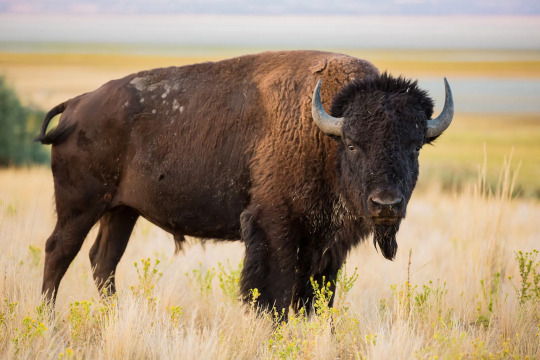
Bison: horns (Rodriguez, 2023).
Horns are used for activities such as fighting and protection, so both males and females typically grow them (Rodriguez, 2020). They are made of keratin, which is the same material as our hair and nails (Rodriguez, 2020). Horns are hollow but contain nerves and blood vessels (Myers et al., 2023). Horns grow continuously, meaning they are always a part of the animal. If an animal were to injure and lose its horn, though incredibly painful, it wouldn’t be gone forever. Considering the horn will continue to grow, it is pretty easy to spot animals who have been in this unfortunate circumstance, as their horns are uneven lengths.

Mule deer buck: antlers (Eades, N.a)
The entire purpose of antlers is to attract the ladies. Males will use them to fight others, and flaunt their big beautiful antlers to the females (Myers et al., 2023). Antlers are grown annually, beginning with the males growing their antlers slowly prior to mating season. In this stage, the antlers are not fully hardened, and are covered in a brown fuzz known as velvet (seen in the figure above). Velvet supplies the antlers with blood and nutrients while they grow (Myers et al., 2023)! Once the antlers have grown fully and hardened, the velvet sheds off, revealing the white bone most people are familiar with (Myers et al., 2023). This is a bit of a bloody and gruesome-looking process, but rest-assured, it��s natural. Once mating season has arrived, the males show off the antlers they have spent months growing. When mating season is over, the males get to enjoy the relief of dropping their antlers as they are no longer needed, only to grow them again the next year (Myers et al., 2023). This is a continuous cycle for animals with antlers, and each year, the antlers tend to grow larger. As their purpose is typically to attract females, antlers are only found in males (Myers et al., 2023). However, one species defies that rule…

Caribou: antlers (Caribougenomics, N. a).
Both caribou males and females have antlers (Myers et al., 2023)! Caribou, also known as reindeer, use their antlers for more than mate attraction. Similar to horns, females protect their food and even their young from other caribou using their antlers (Field Museum, 2016). As depicted in the photo above, the portion of the antler that traces the bridge of the caribou’s nose is called a shovel. Caribou can use this shovel to dig through snow and chip away at ice to be able to reach their favourite food; lichen, a type of fungus (Field Museum, 2016).
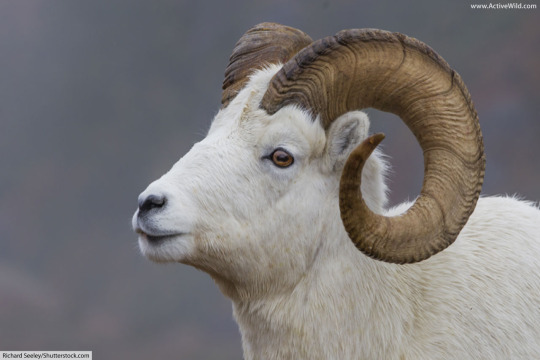
Thinhorn sheep ram: horns (Seeley, 2018).
One of my favourate pairs of horns belong to thinhorn sheep rams. Of course, these well-known horns are beautiful, but they are also informative. Every winter, thinhorn sheep have limited access to food so they become malnourished. During these cold winters, a darker ring forms around the base of the horn (Eamer, 2014). As growth continues, multiple rings can be seen on the horns of these rams. Just like a tree, counting these rings reveals the age of the sheep, as it depicts the number of winters they have endured (Eamer, 2014).
References
Anonymous. (2016). Antlers: What’s their function? Field Museum. https://www.fieldmuseum.org/blog/antlers-whats-their-function
Caribougenomics. (N. a). About [Photograph]. Genomics to Manage and Protect Caribou Populations. https://caribougenomics.org/en/about/
Eades, P. (N. a). Mule deer buck in velvet [Photograph]. Original Wildlife Images. https://petereades.photoshelter.com/gallery-image/Mule-Deer/G0000JMfisUrHPEA/I0000EN9qOM12ljc
Eamer, C. (2014). Yukon thinhorn sheep: Horn growth, genetics and climate change. Government of Yukon. https://yukon.ca/sites/yukon.ca/files/env/env-yukon-thinhorn-sheep.pdf
Myers, P., Espinosa, R., Parr, C. S., Jones, T., Hammond, G. S., & Dewey, T. A. (2023). Horns and antlers. The Animal Diversity Web. https://animaldiversity.org/collections/mammal_anatomy/horns_and_antlers/
Rodriguez, E.. (2023). Bison [Photograph]. Britannica. https://www.britannica.com/animal/bison
Rodriguez, E. (2020). Horn. Britannica. https://www.britannica.com/science/horn-zoology
Seeley, R. (2018). Dall sheep facts, pictures, videos & in-depth information [Photograph]. Active Wild. https://www.activewild.com/dall-sheep/
1 note
·
View note
Text
Hey Carson,
I enjoyed your post, I learned a lot! You covered many of the ways music is found in nature, in fact, I never knew that ravens can 'fake out' other animals with their calls. I also did not know that the drumming used in Indigenous music represented Mother Earth's heart rate, which is really beautiful.
I must say my favourite part of your post though was your song choice; Subwoofer Lullaby. As soon as I clicked on the youtube video and heard the song, it instantly made me nostalgic. I can't say this song makes me think of nature, but it brought me back to my childhood, playing Minecraft with my best friends and cousins. Playing those games with others brought me so much happiness back then and I think it made the people I played it with closer to me. This is a great song to demonstrate how music is so much more than just sounds, to some, it is memories, feelings, and strengthens relationships.
Great post, it was quite an interesting read.
Take care,
Megan
Music in Nature
Music in particular is an extremely powerful force that can draw people in, and express a powerful feeling in a way that people from all walks of life can enjoy and relate to. Music is a universal language that people from all cultures around the world use to express themselves, and the environment around them. Music can be any form of sound that is manipulated by a change of tone and pitch, and for this reason music is most definitely present in nature. The sounds of the birds calling to each other, the mating calls of various animals, and the sounds that are produced by climate such as the sound of wind echoing, or that of raindrops on the night of a thunderstorm these are all melodies that are produced everyday in nature. Sounds are used by many animals throughout the world's ecosystems to communicate various different messages such as for mating, pointing out a food source, or warning fellow animals of a predator nearby, in a similar way to how humans use many different mediums to communicate their thoughts and feelings. It is for this reason that music is so present in nature, the sounds of nature tend to serve an important function, such as Ravens who will mimic the calls of other birds to trick them or lure them to a certain location (Bird Avid, 2022). In the same way, music serves an important function for humans in regards to helping us express emotions like beauty or despair in a way that simply speaking can't.
One of the greatest and most consistent sources of inspiration that many artists draw from is often forces of nature, and you see many songs use references to nature, especially when you look at things such as folk music or cultural music, where references to the natural landscapes of a particular nation serves as a source of national pride. It is for this reason that music can be such a magical force when it comes to making people feel a deeper connection to nature which can further help develop someone's understanding of nature and of it’s beauty and importance (Beck et al., 2018). Nature in music can be seen in its purest form when we look at things such as the drum in indigenous culture which symbolises the heartbeat of mother earth, such connections show how intertwined nature truly is with music (Hampton, 2021).
One song in particular for me personally that makes me feel a connection to a landscape in nature is the song Subwoofer Lullaby by c418, which is the artist that makes the band for the world famous video game, minecraft. I often had this and the rest of their soundtrack in my ear while working endless hours as a tree planter, the calm piano music made me feel such a strong connection to the earth I was planting, as I also had in mind my fond childhood memories of exploring the endless landscapes in minecraft. Minecraft is a game that had different soundtracks that often pertained to different biomes and landscapes of the map, and it did such a fantastic job of setting the mood of being in a spruce forest, a desert, a mine, or a snow biome. This is a great example of how music can be used to bring people closer to music, as you can also do through other forms of art such as video games, and there are no limits to the natural beauty you can capture in the form of song, and the magical feelings of awe that music can strike into the hearts of many.
youtube
Citations
Why do ravens mimic sounds? explained. Bird Avid. (2022, December 1). Retrieved March 5, 2023, from https://birdavid.com/ravens-mimic-sounds/#:~:text=Ravens%20make%20different%20sounds%20to,t%20so%20common%2C%20after%20all.
Beck, L., Cable, T.T., & Knudson, D.M (2018). Interpreting Cultural and Natural Heritagefor a Better World (1st ed). Sagamore Venture.Hampton, M. (2021, July 15). Indigenous drumming a sacred art. Merritt Herald. Retrieved March 5, 2023, from https://www.merrittherald.com/indigenous-drumming-a-sacred-art/#:~:text=%E2%80%9CFor%20First%20Nations%20Peoples%2C%20the,special%20rhythm%20on%20the%20drum.
5 notes
·
View notes
Text
My Two Favourite Topics Crossover: Music x Nature
Personally, music is one of the most important things in my life. I know that sounds dramatic, but it is so versatile and holds value to me for many reasons. I enjoy finding new music, songs I can relate to, and bonding with others over it. Music influences my emotions, my energy, and helps me focus. I could go on for a while about all the reasons I love music, but today I want to address how it relates to nature.
Growing up, camping was a big deal for my family. In the summer, every moment we could, we would go camping either just ourselves or with extended family and friends. A lot of people look at camping and ask, “why would you want to sleep on the ground and be dirty for a few days?”. Though this is completely valid, my family looked at camping as a way for us to connect together. We become so infatuated with our own daily lives that we forget to reach out to one another. What does this have to do with music? Well, one of my favourite camping activities is a nighttime campfire while my Dad plays the guitar and we all sing songs together. This music in nature empowers my family and brings us closer together. Bringing a guitar outside is of course not the only time music is found in nature. The most natural form of music includes birds chirping, wind howling, and trees blowing. Often when I go on nature walks, I take time to remove my headphones, and let nature’s music make me feel at peace. It is times like these that I feel calm, and am more in tune with both myself and the natural environment around me.
Music requires inspiration behind it. I think relationships with nature are impactful enough to inspire many songs. A student from the University of Linfield wrote a thesis on The Essentialism of Music in Human Life and Its Roots in Nature. The student describes ways in which composers relate their music to the 4 seasons. She demonstrates how composers convey their emotions that accompany the seasons changing in their own music, or how they perceive one season in particular. Though I’m not familiar with classical music myself, I’d like to share a few songs that relate to this topic. 4 Seasons by Rex Orange County depicts how he feels about caring for someone who doesn't care for him, and how through the seasons though others have moved on, he still has not. we fell in love in october by Girl in Red describes a blooming relationship becoming more serious in October, and the complicated feelings she has about being in her first lesbian relationship. Lastly, in Autumn Leaves by The Walters, the group describes the difficulties in moving on from a relationship, and still being reminded of the one you love as time continues to pass (ie. the autumn leaves fall, similar to the meaning of 4 Seasons).
A song that always brings me back to a natural landscape is YUKON (INTERLUDE) by Joji. I expect when most students respond to this portion of the blog prompt, they will likely choose a song that has lyrics that resonate with them or songs that they enjoy while they are out in nature however, I choose this song because of its title. The artist, Joji, happens to be one of my favourate artists, and he released this song at the end of summer 2022, which was the end of my time living in the Yukon for 4 months. It is a beautiful song, but every time I see the title, let alone hear it, I am reminded of all the fun I had in the best summer of my life, and how much I look forward to returning to the North.
Linfield University Thesis: https://digitalcommons.linfield.edu/cgi/viewcontent.cgi?referer=&httpsredir=1&article=1005&context=muscstud_theses
1 note
·
View note
Text
Super well-worded post Cam, great work! I completely agree with both you and Hyams that history cannot be linear as it is so relevant to our present and future. History is not just something that is looked back on, but something that is remembered. It serves as a key of solutions to problems we may face and reminds us that our actions have consequences.
I'd like to focus on the very first line where Hyams claims that "ancient things are without merit". Though you consider this sentence as contradictory to the overall point Hyams is making, I think of it as a foundation. I think that line serves a purpose as some kind of shock factor. When I first read it I immediately disagreed, considering there are archeologists who commit their entire lives to these 'ancient things'. But upon further reflection, I believe this line means that ancient things on their own are nothing but some pieces of material, but it is their stories, their history, that makes them so valuable.
I actually believe that Hyams relies a lot on shock factor throughout this quote. Same as believing that the train station does not exist when you are not there to see it - surely no one would be ignorant enough to believe that. Hyams uses this framework to set up how that same thought process must be applied to the relevance of the past. And if you disagree, you're just as ignorant as believing that a train station is only there when you are too.
Fantastic post,
Megan
A Historical Approach to Nature interpretation (Unit 06)
“There is no peculiar merit in ancient things, but there is merit in integrity, and integrity entails the keeping together of the parts of any whole, and if these parts are scattered throughout time, then the maintenance of integrity entails a knowledge, a memory, of ancient things. …. To think, feel or act as though the past is done with, is equivalent to believing that a railway station through which our train has just passed, only existed for as long as our train was in it.” (Edward Hyams, Beck at al. 2018, pp. 342)
I like the comparative nature this quote uses to exemplify history as a mobile entity that exists beyond the linear point-to-point dry analysis that seems to accompany this topic. Although the quote contradicts its initial standpoint by claiming "ancient things are without merit" and then further going on to standby the maintenance of the exact "things" that were dismissed unless comprised as valuable sections of the integrity of the whole.
Through my interpretation, this quote favours the both observable and record based documentation of history as an interconnected web of "integrity" or a valuable knowledge-based archive that is dependent on the strand of history one chooses to pursue. Through this analysis it touches upon this weeks course content surrounding the importance of expression through the written word and how history illuminates and provides a fundamental context to all lives processes.
The most important part of this quote in my opinion, is the dismissal of history as a "one stop station" that is isolated and otherwise insignificant outside of its conceptualization. Suggesting, that an ideal view of history through a non-linear lens and as connected circumstances that drive a process. From there, interpretation allows us to examine from multiple points of access that occur; pre-, post-, and amidst the details of historical record. Leading to the important takeaway of addressing the writing style and linguistic approach of recording history, is that although intended, it is practically impossible to remove the writer and their experience from the record. Everything in historical record is symbolic, from word choice to imagery to contents, all of the ways those individuals transcribed events are through a form of interpretive lens.
As contradictory as a find the opening to this quote, the tie in of the ridiculous analogy that history could be minimized to the role of a "floating" or otherwise randomly existent isolated station drives home the intended theme that how we record, experience, interpret, and sequence the process of life events is just as valuable a tool for us as interpreters when establishing different ways to connect or communicate with our audiences.
Excited to hear from you!
Cam
References
Beck, L, Cable, Ted T., Knudson, D. M. (2018). Interpreting Natural & Cultural Heritage. Sagamore-Venture Publishing. 2018
3 notes
·
View notes
Text
Decoding the Importance of History
This week's blog prompt quote made my brain hurt upon first read. My post is going to break down the quote section by section, in hopes of making what looks like a word soup into a meaningful, inspiring passage.
“There is no peculiar merit in ancient things”: Well, peculiar means different from normal, and merit is to be particularly good. Together, Mr. Hyrams describes that there is nothing special about ancient things. And I must say, when I first read the first eight words of this quote, I had to disagree with Hyams. Archaeologists devote their entire lives to discovering and learning about ancient artifacts and places. With more reflection I realized that these ancient things don't hold value on their own, it is their story that makes them important.
“... but there is merit in integrity,”: Integrity is honesty and having good morals which can be a rarity to find these days. It is most definitely a valuable quality. “... and integrity entails the keeping together of the parts of any whole, and if these parts are scattered throughout time, then the maintenance of integrity entails a knowledge, a memory, of ancient things.” Integrity can also mean the state of being whole. Hyams intelligently uses both meanings of the word concurrently. He states if integrity is broken, and is therefore no longer whole, we must reflect on the time in which it was whole to understand how to put the pieces of integrity back together. To do so, history is crucial and cannot be forgotten, for if they are, we blindly fall back into problems that have already been solved for us.
I'm going to deconstruct the next two sections of the quote out of order, as they will be easier to understand this way. “…believing that a railway station through which our train has just passed, only existed for as long as our train was in it.”: It would be foolish to believe things are only important when they are relevant to us. Everything that we value has worth before and after it crosses paths with us. Hyams is basically saying that the world doesn’t revolve around you, and just because you do not need something in a given moment, does not mean it isn’t important.
He compared this simile to “think[ing], feel[ing], or act[ing] as though the past is done with”. Ancient things and the past as a whole tell us about our history, how we got where we are today, and are a reminder of how far we’ve come. If we were to forget about our past, we would never learn from our mistakes, or already have solutions to our problems. There's a reason our brains develop object permanence; understanding that things still exist when we can no longer see them, and that’s because they still serve a purpose when they are not directly in front of us. Overall, I think Hyams made this quote to remind us that the past makes our present, and inspires our future. The past is as important now as it was when it was the present.
2 notes
·
View notes
Text
Hey Cameron,
I really enjoyed this post, it's like you took the thoughts I've had for years and put them into words. I think this topic was a great choice for you to talk about in this week's 'freelance' prompt, as it is clear this is something you feel very passionately about. I think a reason many people have this 'blatant disregard of our planet' is because of a lack of repercussions for their own actions. Of course there is a price to pay for harmful environmental actions, but typically it is first-world parties committing them, and third-world parties that are punished. People like this could deny their own harmful actions, saying 'global warming doesn't exist', or whatever else it may be, so it is not until more laws are put into place to directly punish them that we might see changes.
Obviously, most of this talk is very broad and does not speak to every individual in the world. On a brighter note, there is hope as long as there are still people who care. Last semester I took ENVS 3010: Climate Change Biology taught by Simone Haerri (10/10 recommend by the way), and the fact that the university even offers this course, the fact it was filled with students, shows that there is hope for change. There are growing populations of environmentalists who are trying to mitigate climate change, spread awareness, and do everything we can to help the Earth. Because of this, I still have hope that our planet will persevere, in spite of these careless individuals you shed light on in your post.
Keep doing what you're doing,
Megan
Why can't we be better? (Unit 05: Freelance)
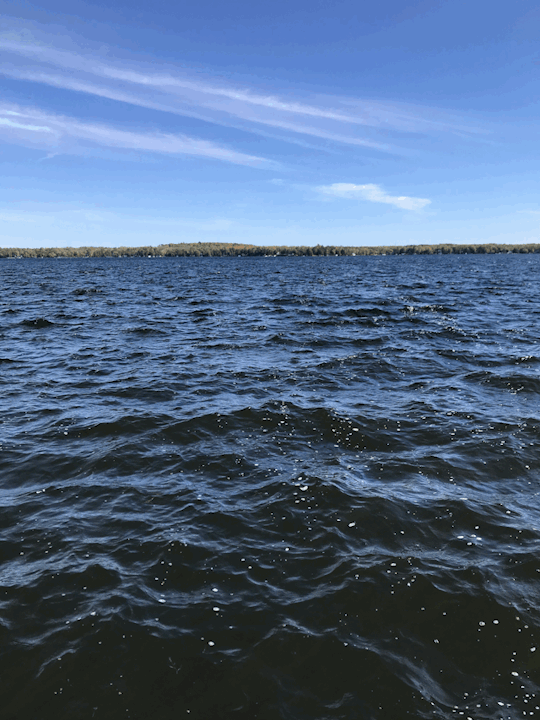
When I look at this photo I see more than just the lake, or the day it was captured and why I was there. To me this photo represents adversity. The goal is the other shoreline, to get there you have to swim. Without any context, it's a guessing game full of variables; temperature, chemical hazards, wildlife, boaters, depth, distance, time constraints, weather, etc. The importance of this comparison is that I view the challenges of communicating from the highly-educated to the general public and vice versa, the same way. A battle of adversity. Are you willing to make the swim? Is it worth it to even try? Will anyone care?
I believe in the freedom of information, the freedom of speech and the access to clear, capable and conscious communication for all and the effectiveness of a well-informed electorate to make morally and ethically smart choices. I believe in the good of people and our responsibilities as co-habitants of this planet to be environmentalists because we posses the power to do so.
Thematic Question (Please read carefully): Why would you, purposely leave a space worse than how you found it?
I find the context of this question to be applicable on numerous stages of argument in benefit of environmentalism and an advocate of a strong collaborative global society. The thought I am trying to instil in your minds is; what reason do we really have that excuses us for acting deliberately harmful to our planet?
In my opinion, I believe our pitfall lies within our communication. We currently live in one of the most polarizing eras of humanity, from civil rights issues, the protection of biodiversity against medical/technological/economic advancement, population and sustainability crises, to acts of war. The way we conduct, present and express ourselves individually and as part of a group dictate the terms of our situations. Yet, we choose to act in blatant disregard of our planet and the life it is able to provide and sustain. The solution is to provide everyone with the information and process to effect collaborative positive change, because the consequences of inaction from unwillingness and ignorance is morally and ethically destructive.
3 notes
·
View notes
Text
Animals of the North
In my opinion, the most important part of being an interpreter is having passion for whatever you are teaching your audience about. When an interpreter is passionate, often it is contagious and is something that cannot be faked. It doesn’t really matter what you’re talking about, as long as the audience is engaged. We have talked a lot about how to interpret in this course, but haven't actually done too much interpreting yet. Personally, I find arctic animals fascinating; I spent my summer working with them! My aim in this blog post is to get you excited by learning about two of my favourite arctic animals, by incorporating topics, lenses, and techniques we have learned about this semester.
Firstly, I’ll introduce you to musk oxen:

Retrieved from Mark Newman/FLPA/Minden
Musk oxen, though sometimes a little hot headed, are some of the most fascinating Arctic animals. They are native the true North - the Arctic circle that is nearly nothing other than snow and ice, meaning they must adapt to harsh conditions (Woodford, 2021). Qiviut, the undercoat of the musk ox, is one of the warmest (and in turn most expensive) materials that can be found (Woodford, 2021). This insulating wool is part of the musk oxen's two-layered coat, allowing them to stay toasty up at the top of the globe.
Though musk oxen are fast, when a predator approaches them, they don't have many places to run to in their plain landscape. Instead of flight, musk oxen opt for fight, in which they form a circle, put their young on the inside, point their horns out, and charge any brave predator that comes too close (NPS, 2020).
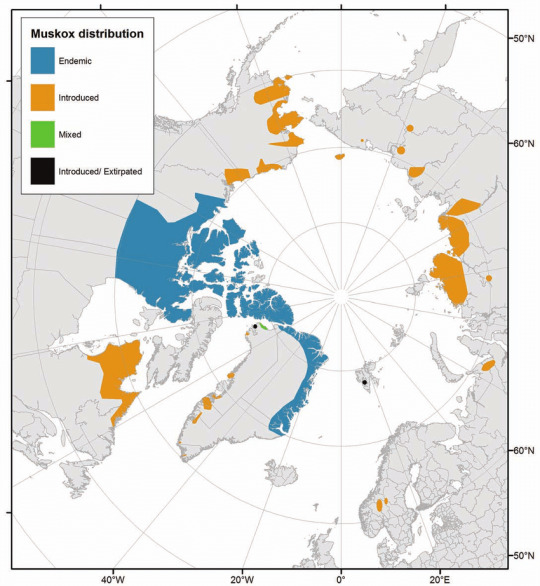
Here are the regions musk oxen are found. Most of this is in the Arctic circle, though they can also be found in other regions such as the Yukon. Retrieved from https://www.researchgate.net/figure/Current-global-distribution-of-muskoxen-The-exact-distribution-of-muskoxen-around_fig1_317268906
Next, we will discover the many ways in which Canadian lynx have adjusted to their cold environment:
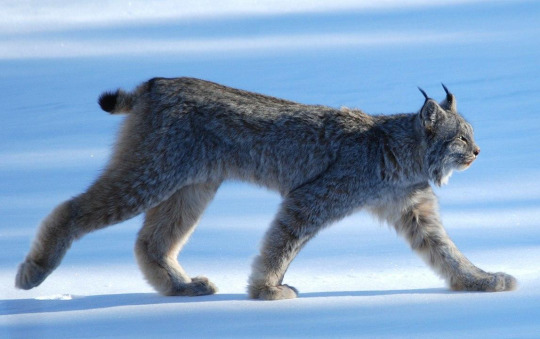
By Keith Williams - originally posted to Flickr as Lynx Canadensis, CC BY 2.0, https://commons.wikimedia.org/w/index.php?curid=11394713
Lynx are a great example of the extreme adaptations that animals must have to thrive in Arctic conditions. Their paws are massive in proportion to the rest of their bodies; it reminds me of a German shepard puppy however, lynx do not ‘grow into’ these paws as they stay this large as adults. These paws act like snow shoes to allow these cats to walk gracefully on top of deep snow, rather than sinking down into it (Vea, 2014). Lynx also have beautiful tufts of fur on the tips of their ears which is believed to aid in their hearing (San Diego Zoo, n.d).
Their coat acts as camouflage, allowing them to be ambush predators. Ambush predators sit and wait for prey to approach them while they blend in with their surroundings. Once the prey is close enough, a short burst of energy is used and soon enough it’s lynx dinner time. In other cat species, their long tails are used for balance, especially when running long distances. However lynx run sprints, not marathons; having a long tail would serve little purpose and just be another extremity to keep warm in the cold, so they have short tails instead (Vea, 2014).
I hope you learned something new about these beautiful mammals. I’ll leave you with a question to think about - what other adaptations may be vital for the survival of some Arctic animals? I’d be happy to answer any questions about lynx or musk oxen, I could talk about them all day!
Note: All the facts I listed are things I’ve learned across 4 months this past summer. Below I included a few sources to back my claims, though they are not directly where I retrieved any of this information.
National Parks Service. (2020). Circle defense. https://www.nps.gov/gaar/learn/nature/muskox-circle-defense.htm
Woodford, R. (2021). Captive muskox and exquisite Qiviut, Alaska Department of Fish and Game. Captive Muskox and Exquisite Qiviut, Alaska Department of Fish and Game. https://www.adfg.alaska.gov/index.cfm?adfg=wildlifenews.view_article&articles_id=1009
Vea, T. (2014). Animal Guide: Canadian lynx. PBS. https://www.pbs.org/wnet/nature/animal-guide-canadian-lynx/1228/ San Diego Zoo Wildlife Alliance Animals and Plants. (n.d.). Lynx and Bobcat. https://animals.sandiegozoo.org/animals/lynx-and-bobcat
1 note
·
View note
Text
Hey Nolan,
This was a super captivating read about the significance of photography and storytelling in nature interpretation. When you mentioned how the Stoney Nakoda language keeper first told their story in the Stoney language, and then in English, it made me think about what this means for nature interpretation. The fact this story has probably been shared with so many people uncovers the importance of storytelling in bringing different groups of people together. That night you were able to bond with people who speak a language entirely different from yours, and probably share very little in common with them besides the interest in this very story. Inclusivity in nature interpretation has already been highlighted as a problem in this field, so if a tool such as storytelling can bring more people together, then its importance should not go unnoticed.
You also mentioned that the most important photographs are the ones that tell a story, yet I believe that all pictures tell a story. Whether it be the story intended, 'most accurate', or whatever else, when people see a picture they usually subconsciously create a story for it. Especially in the context of art, show 100 people a photograph and they may all take something different away from it. I think this is the beauty of using art in interpretation, as it allows your audience to have a more enriched, individual experience.
Thanks again for the great read!
The Art in Nature Interpretation
It's no secret that there is beauty in nature. The "gift of beauty” can be described as someone’s capacity to appreciate the infinite beauty in nature (Beck et al., 2018). This extends beyond the aesthetic and visually spectacular characteristics of the natural world, but also the beauty of the natural systems and relationships that link all parts of nature together in the universe.

Art has long played a role in how humans understand the natural world. Some of the oldest works of art are cave paintings or stone carvings that depict artistic representations of people and/or animals. Today, artistic works come in many mediums of course, and photography is one that is incredibly accessible to many people today. The fact that most of us carry a camera in our pockets surely contributes to the wide reach of nature photography. I’m sure many of you reading this have some photos of beautiful landscapes or wildlife in your homes, whether it be Moraine Lake at sunrise or the mating display of a male peacock. However, I find that the most compelling natural photography is that which is accompanied by a story.
I believe that the art of storytelling can be one to the most reliable and compelling tools for nature interpretation. Stories can leave a very strong impression on someone, so long as the story was well-told and resonates with the audience. I have many vivid memories of well-spoken storytellers who were performing nature in some capacity.
I remember in the summer of 2021; I attended a fireside chat at Barrier Lake in Kananaskis. I had the privilege to listen to a Stoney Nakoda language keeper speak to our group, and he told us the story about where the name “Kananaskis” had come from. It had come from a miscommunication between a Cree translator on the Pallister expedition, and a local Stoney boy who was helping the expedition navigate. This story felt especially artistic in the way he told the story since he first told it entirely in the Stoney language, (to which the elders in the circle would laugh along) and he then repeated it in English for us. In doing so he emphasized the relationships of First Nations with this land, having been here first and thus hearing the story before it was spoken using English words where further miscommunications inevitably arise.
This story is closely linked in my memory with the entire evening when I heard it, the dusky atmosphere, the good friends who came with me, and the food I ate while I was there. Compelling stories like the one I listened to that evening can elevate nature-focused experiences and help foster someone’s idea of their connection with the natural world.
While not every story can be equally memorable, and not everyone can hold a crowd’s attention like the language keeper I met in Kananaskis, I think that photography is a strong tool that can go together with photography when used right. Many of us in this course have been using very intentional photos to accompany our blog posts and make them more resonant with the class. On the other hand, some of the best photographers I know will have a story behind each photo they share. To me, these stories add even more colour to the scene than the ink or pixels bring to the full picture. When I go to share a story about something that happened to me while in nature, I am often tempted to pull up a photo that compliments what I’m talking about. Not every time, as sometimes the challenge of telling a story without a photo forces the story to be more colourful, but when I know I’ve taken a strong photo that can punctuate my message I will go ahead.
That’s all for now,
See you next time
Beck, L., Cable, T. T., & Knudson, D. M. (2018). Interpreting cultural and natural heritage: for a better world. Sagamore Venture.
3 notes
·
View notes
Text
Be Smart, Use Art!
We’ve all heard the saying ‘a picture is worth a thousand words’, but what other value does it have? Art can be used to invoke emotional and/or intellectual cognitive responses. It is a form of communication that has been used ever since the beginning of human existence and should be valued. Nature in itself is art, and art in itself is interpretive. It is relative as it can be understood in hundreds of different ways. Both nature and art convey beauty, and share many similarities.
Beck and Cable use ‘The Gift of Beauty’ to describe the following principle; “interpretation should instill in people the ability, and the desire, to sense the beauty in their surroundings - to provide spiritual uplift and to encourage resource preservation” (2011). I believe that just like art, beauty too is interpretive. Beauty is presented in countless forms and appreciated in many ways. I think art can be beautiful, but sometimes imposes stronger emotional responses when it is hideous. While beauty is indeed a gift, should it be worshipped more than art itself? Art tells a story while beauty is simply appreciated. These stories communicated through art can be used in interpretation to better connect the audience to nature.
There are endless ways art positively influences nature interpretation. For starters, art can make interpretation more inclusive. Think of people who may not be proficient in English, those who are hard of hearing, and children. Introducing other ways to convey information to guests is crucial, as everyone learns differently. Art can bring people together, regardless of their differences (for example, cultural or intellectual). We’ve previously established how inclusivity has been one problem we are looking to find solutions for in the world of nature interpretation. If the use of art creates a bigger audience, that is one step forward in our efforts of making nature interpretation more inclusive. Art also has the ability to provide different perspectives on nature that perhaps I am unable to as an interpreter. This again could help the audience better connect with the experience as a whole.
So, who am I to interpret nature through art? I think I’d be a stronger guide by creating a richer experience for the guests. I’ve used props on tours before to enhance the experience of guests, and art is just another tool. It can be used to gain interest and perhaps welcome questions about the topic we are discussing. There are so many ways we can present art to our guests; through visual arts such as paintings, photographs, or sculptures. Art can be used in the form of music, stories, and theatre as well. Art could set the tone or theme of the day by using it at the beginning of a nature tour, or possibly be used at the end to combine everything that was learned on the tour into one complete idea. It is important to reflect prior to conducting a tour including the use of art to ask yourself, ‘what story does this art tell?’. Ultimately, if art has the potential to strengthen the connection between your guests and nature, then why wouldn’t you use it as a tool to enhance their experience?
Beck, L., & Cable, T. T. (2011). The gifts of interpretation : fifteen guiding principles for interpreting nature and culture (Third edition). Sagamore Publishing.
0 notes
Text
Hey Catherine, this was a super well-written and researched post! I really enjoyed the last paragraph in which you gave solutions to the problems in nature interpretation that you had previously mentioned. Hiring a more diverse group of staff members could make minorities more comfortable and eager to learn about nature. Unfortunately, part of the problem is finding a diverse staff in the first place. The problems you raised about people not having access to nature interpretation - not speaking English, economic and cultural barriers, and lack of education - these all could apply to people looking to be interpreters as well. This is another clear example of privilege as these minorities looking to become nature interpreters may have to work twice as hard to achieve the same goal as someone who has these privileges (and more).
I also found it interesting how you linked fear with privilege through a lack of knowledge. Education is a privilege and when we are interpreting, we must keep in mind that the guests likely don't have the same knowledge as us. This is why I think awareness of one's privilege is key. To overlook one's privilege, whether it be race, gender, economic state, or even level of knowledge, is ignorance. For those of us that hold this privilege, it is essential that we are mindful of what we have, and understand that not everyone has the same opportunities as us. Having this awareness links back to having an understanding of why a more diverse staff is so important. And the ways in which having a diverse staff can mitigate fear.
Unit 03: Risk versus Reward Interpretation
Addressing Privilege in Nature Interpretation
I define privilege as unearned advantages that apply to certain groups of people. For instance, someone who grew up in a middle-class home with married parents did not earn the benefits of having food on their table every night, but rather are born into that privileged lifestyle. Peggy McIntosh (1989) describes how privilege can be seen as an ‘invisible backpack’ of unearned assets that can be counted on cashing in each day, but is meant to remain oblivious. In other words, many individuals are unaware of the privilege they hold in their invisible backpack and overlook the lack of privilege that others experience. By unpacking our invisible backpacks, we can acknowledge the privilege we have as individuals.
Here I will unpack my own invisible backpack; I am a white, middle class, healthy, young woman. I am also a highly educated individual that speaks English, is able to pay for university, possesses a Canadian passport, and has the opportunity to travel outside of Canada if desired. I grew up in a small suburban neighborhood that was relatively safe, I always had food on the table and my family could afford many extracurricular activities that my brothers and I would partake in. These are all things that I have been given from the love and support from my family without directly earning.
Privilege also has a major influence on how we interpret and experience nature. There is a noticeably large lack of attendance from minorities in nature interpretation parks and this is suggested to be true due to economic, cultural, communication, knowledge, and fear barriers (Beck et al., 2018). Economic barriers from minority groups relate to large entrance fees to parks and minorities experiencing a generally lower socioeconomic position in society (Beck et al., 2018). Cultural barriers refers to the differences in culturally accepted activities in minority groups. For instance, some minority groups would not prefer camping as it is deemed more as being in deep poverty than as an activity to experience the wilderness for enjoyment (Beck et al., 2018). Communication barriers can prevent interpreters from being able to communicate with a variety of audiences that speak different languages aside from English. Speaking English is of high privilege and gives great advantages to people to be able to experience an abundant amount of activities in Canada. In relation to this, there is a lack of knowledge on the subject of nature in minority groups which can be a result of language barriers. Finally, fear also corresponds with this notion of lacking in knowledge. There is uncertainty of what to expect with wildlife encounters, as well as potential discrimination against minority groups in predominantly white-based activities such as camping (Beck et al., 2018).
Beck et al. (2018) suggests ways that we can provide inclusivity towards underprivileged and minority groups in terms of nature interpretation. Cultural barriers can be reduced by personally inviting minority populations to nature interpretation events through organizations to attract minority populations. By hiring a more diverse group of individuals, language barriers can be minimized by having a variety of programs be presented in multiple languages. Similarly, by increasing staff diversity, fears can be reduced and ultimately more education can be provided to marginalized groups.
References
Beck, L., Cable, T. T., Knudson, D. M. (2018). Interpreting Cultural and Natural Heritage for a Better World. Sagamore Venture.
McIntosh, P. (1989). White privilege: Unpacking the invisible knapsack. Peace and Freedom, 10-12.
5 notes
·
View notes
Text
The P Word
Privilege is both forgotten and obvious. Those with it rarely think of it, reflect on it, or are thankful for it. Those without it may be envious or constantly reminded of those privileges that they do not hold. Not acknowledging your advantages in life is a privilege within itself. We want equality, the same opportunities for all. Those with the best skill sets should be awarded, regardless of the challenges they have faced in their life. But we must acknowledge that not every challenge can be won by trying the hardest. Sometimes advantages are given to individuals the moment they were born that will be held for their entire lives.
More often than not, privilege is permanent. It usually cannot be taken away from those holding it, so what can we do? Though it may be uncomfortable, awareness, acknowledgement, and mindfulness are key. Don't be the person who is blind to their own privilege that so clearly sets them ahead from others. Having this awareness and being mindful alone will change your perspective in day-to-day living. These same ideas can be applied to privilege in nature interpretation.
As an interpreter, it is our job to quickly analyze our guests in order to cater to not only their learning, but to give them the best experience all around. To be able to provide this, self awareness and how you conduct yourself is quite important. A major privilege in nature interpretation is access; whether it be guests being able bodied for a nature walk, or being proficient enough in english to understand the interpreter. As the interpreter, we cannot overlook these privileges, but instead find ways to navigate them to provide an enjoyable tour. I personally have actually encountered many people who don’t have these privileges while I was working in wildlife interpretation. I discovered tools that aided me in giving these individuals access to the information I shared so they were able to make the most of their experience. For example, the tours I gave involved getting off of a bus to talk about the wildlife in front of us, then getting back onto the bus to drive to the next animals. Sometimes I provided tours to people with mobility issues, while still having others that wanted to get off of the bus. My solution was getting off of the bus with the others, but I had a microphone that connected to the interior of the bus so that the people inside could still hear me! Most of the tours I provided were to tourists travelling from across the world so, many of them understood little english. In these cases, I altered my teachings to be less word-focused. I used props to convey the information, as well as talking slower and using my hands while I spoke. I have even conducted tours that had translators that repeated every sentence I said in another language!
Since privilege cannot be taken away, it is not something to feel shameful about. It is often an advantage people are given without asking for. Privilege is a power that has been abused and misused. Reflect on the power that you hold rather than ignoring it.
0 notes
Text
Disclaimer
This blog was created for ENVS 3000 W23, University of Guelph.
The opinions expressed here represent my own and not those of the University of Guelph.
The University of Guelph is not responsible for the accuracy of any of the information supplied by this blog.
Disclaimer
This blog was created for __________, University of Guelph.
The opinions expressed here represent my own and not those of the University of Guelph.
The University of Guelph is not responsible for the accuracy of any of the information supplied by this blog.
80 notes
·
View notes
Text
Catherine, this was such an interesting read!
In my time as an interpreter, I quickly learned the importance of gearing my tours toward the correct audience. I made my tours for kids extremely enthusiastic, loud, funny, made sure to ask them questions to keep them engaged, and even used props. In my time learning and executing these tactics, I never thought about what these tours are like for the adults accompanying them. You make a fantastic point that with adults engaged just as much as the kids, they're more likely to stay interested in these topics even after they're done with your interpretation!
You also mention how something as simple as diction can make or break a tour for the guests. Using more digestible words makes the tour accessible and comprehensible for the audience. What's the point in interpretation if no one understands what you're saying?! When you're teaching others about a topic you're very interested in, it's likely that you know a lot about it. Sometimes it's difficult to filter what's most important or interesting from everything else that you know for the audience. I think choosing your words and stories carefully is another skill that interpreters must have. However, this brings into the conversation another reason why it is so important to know your audience. If you knew your audience actually already had a background in the topic, you are able to dive deeper into your teachings and broaden their understanding even further.
Great post Catherine, you made so many excellent points. Can't wait to hear more from you this semester!
Unit 02: Teaching Learners
Importance and Roles of an Environmental Interpreter
Environmental interpreters are essential in engaging the public to form a meaningful connection to the environment and world around us. The Environmental Interpretation Manual for Protected Areas in the Mesoamerican Barrier Reef System describes environmental interpreters as people who specialize in making an entertaining and critical interpretation of the realities that can be observed in a natural and social area. The purpose of environmental interpretation is to help humans understand the natural world and help people create a positive, lasting sustainable relationship with the environment (Youngentob & Hostetler, 2018).
When reflecting on who I would want to be as an environmental interpreter, I think of the interpreters I have encountered in past scenarios. More specifically, I think of encounters that I’ve experienced from both my childhood and adulthood. As a child I found that the most engaging presentations were ones that involved a lot of visual stimulation. I also found tactile exercises really beneficial to learn from even if I wasn’t the one chosen for the demonstrations. Through experiences I have faced, I find that the most effective forms of environmental interpretation are those that can grab both children and adult’s attention. An example that reflects this is when I witnessed a Wild Ontario educational presentation in Algonquin Park, Ontario. The presentation was targeted towards children, but it was very effective because it caught the attention of adults as well. I think this quality should not be overlooked because if parents are interested, it encourages them to experience more environmental interpretation opportunities and exhibits, which provides education for current and future generations.
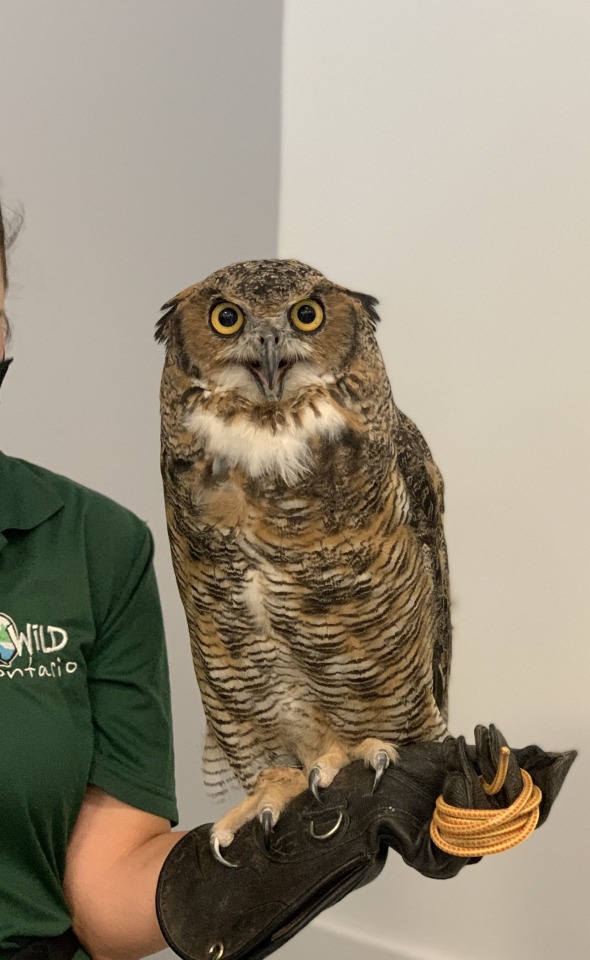
Einstein the Great Horned Owl, picture taken from myself in Algonquin Park, Ontario during a Wild Ontario presentation in August 2022.
Skills required to be an effective environmental interpreter includes being a good speaker that exudes confidence, enthusiasm and amiability (Beck et al., 2018). It is important that interpreters leave a lasting impression and this is most effectively done with simple language so that non-experts can understand the information that is being delivered (Beck et al., 2018). It is also important that interpreters acknowledge that individuals learn through three different learning styles; auditory, visual and tactile. As an environmental interpreter, I would incorporate teaching styles that would benefit each of the three types of learners. This would include having a captivating voice and story-telling ability, including visuals in presentations, as well as if it's possible to include hands-on activities that relate to what information is being shared.
My ideal role as an environmental interpreter would include the past skills I have mentioned. I would aim to use creativity and passion to teach my audience what I know rather than teaching purely through memorization of scripts. By making personal connections with my audience, the chances of them retaining the valuable information would be much higher. Although it may seem unattainable, my ideal job as an environmental interpreter would be at Corcovado National Park in Costa Rica where I would educate the public on the vast diversity of life we have on our planet, and the importance of preservation for species at risk. There is no better place to do so than in one of the most diverse regions on earth. Although I have never been, this park holds incredibly diverse wildlife especially due to its tropical climate. This is an incredible location to teach about biodiversity which is the topic that I am most passionate about and have dedicated my undergraduate degree to!
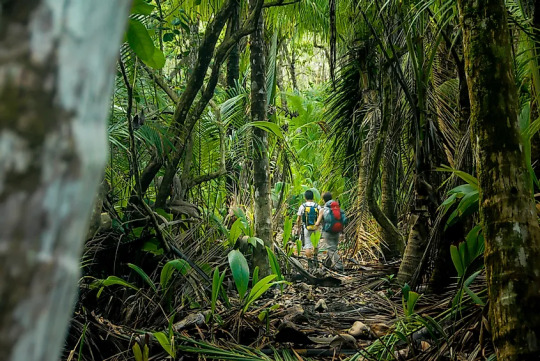
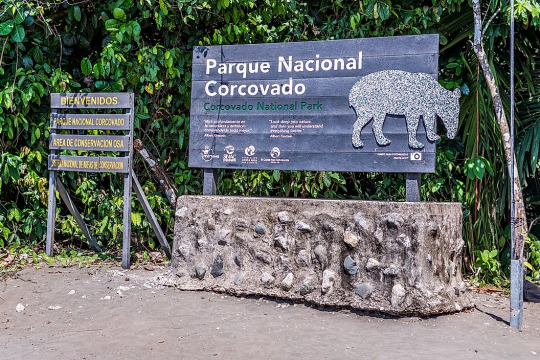
Images of Corcovado National Park signage and landscape taken from World Atlas website.
References
Beck, L., Cable, T. T., & Knudson, D. M. (2018). Interpreting cultural and natural heritage : for a better world. Sagamore Venture.
Dodd, C. (2021) Corcovado National Park, WorldAtlas. WorldAtlas. Available at: https://www.worldatlas.com/national-parks/corcovado-national-park.html (Accessed: January 21, 2023).
Environmental Interpretation Manual for Protected Areas in the MBRS. Convention on Biological Diversity . Available at: https://www.cbd.int/doc/pa/tools/Environmental%20interpretation%20manual%20for%20protected%20areas%20in%20the%20MBRS.pdf (Accessed: January 19, 2023).
Youngentob, K.N. and Hostetler, M.E. (2018) Environmental interpretation: How to communicate persuasively. Available at: https://edis.ifas.ufl.edu/publication/UW182 (Accessed: January 20, 2023).
2 notes
·
View notes